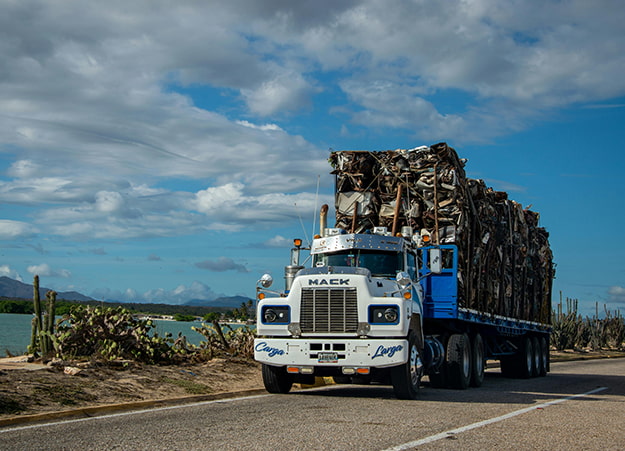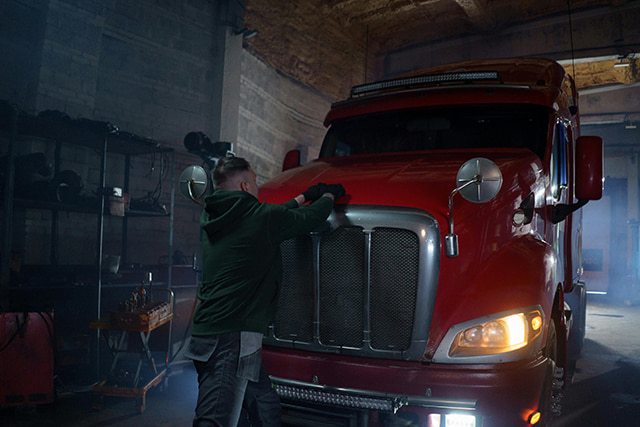Warehouses run on precision in New York City—and nothing throws off that rhythm like delayed freight. Drayage trucking in NYC moves goods quickly from ports and rail yards to warehouses across the five boroughs and beyond. With limited space, high operating costs, and constant demand for speed, warehouses rely heavily on professional drayage trucking in New York City to keep shelves stocked and workflows uninterrupted.
Here are five ways timely drayage services directly support warehouse success.
Table of Contents
Key Takeaways
✔ Timely drayage trucking in NYC helps warehouses avoid costly port delays and demurrage fees.
✔ Professional drayage trucking in New York City ensures inventory arrives on schedule, supporting warehouse efficiency.
✔ Intermodal drayage trucking in New York City connects ports and rail to local warehouses for smoother freight flow.
✔ Short-haul drayage trucking in NYC allows warehouses to plan labor and equipment use more effectively.
✔ Drayage trucking in NYC supports scalable warehousing during seasonal or high-volume demand.
✔ Choosing professional drayage trucking in New York City means better response times, compliance, and reliability.
✔ Accurate documentation in container drayage trucking in NYC prevents delays, penalties, and customs issues.

1. Keeps Port-to-Warehouse Operations Moving
When freight containers arrive at NYC ports, they can’t sit idle for long. Warehouses depend on fast, efficient transfers to avoid storage penalties and keep products flowing. Additionally, container drayage can account for 25–40% of shipping costs, making efficiency crucial. That’s where drayage trucking in NYC steps in—bridging the critical gap between port arrival and warehouse intake.
How Timely Drayage Clears Bottlenecks at Major NYC Ports
- Reduces Costly Container Wait Times: Ports charge demurrage fees when containers stay too long after unloading. Professional drayage trucking in New York City helps warehouses avoid these fees by moving freight swiftly to storage or distribution points.
- Supports Fast Turnarounds for High-Volume Ports: With container traffic flowing through terminals like Port Newark and the Brooklyn-Port Authority Marine Terminal, delays can quickly back up supply chains. Short-haul drayage trucking in NYC enables quick clearance, allowing ports to receive more shipments without gridlock.
- Prevents Disruptions in Warehouse Inventory Flow: A delayed container doesn’t just affect a port schedule—it leaves warehouse shelves empty and downstream orders delayed. By relying on container drayage trucking in NYC, warehouse managers can maintain tight inventory schedules and keep operations smooth.
2. Ensures Inventory Arrives on Schedule
Timely drayage isn’t just about moving containers—it’s about keeping warehouse timelines on track. NYC warehouses often operate on tight schedules, with daily receiving windows, limited dock space, and just-in-time inventory strategies. Late arrivals can throw off everything from labor schedules to outbound shipping.
How Drayage Supports Predictable Inventory Flow
- Aligns With Precise Receiving Windows: Many NYC warehouses schedule deliveries by the hour to manage congestion and labor. Professional drayage trucking in New York City helps meet these windows by using real-time tracking and local route expertise.
- Reduces Warehouse Downtime: If a container arrives late, warehouse workers may be left waiting or reassigned, causing lost time and productivity. Drayage trucking in NYC minimizes these gaps by delivering inventory when it’s actually needed.
- Supports Just-in-Time Inventory Models: Space in NYC warehouses is limited, so businesses often depend on short-haul drayage trucking in NYC to keep products moving in and out without overstocking. Reliable drayage reduces the risk of shortages or surpluses, keeping operations lean and efficient.
3. Connects Intermodal Networks to Local Distribution
NYC warehouses don’t operate in a vacuum—they’re part of a broader intermodal web that links ships, trains, and trucks. Without efficient drayage, containers sit at rail yards or ports instead of reaching their final destination. Intermodal drayage trucking in New York City ensures smooth handoffs and consistent throughput.
How Drayage Bridges Gaps Between Transport Modes
- Transfers Freight From Rail to Warehouse Efficiently: Intermodal terminals like those in Kearny and Maspeth move huge volumes daily. Intermodal drayage trucking in New York City quickly picks up freight and delivers it to warehouses, avoiding rail yard congestion.
- Improves Multi-Carrier Coordination: Many shipments pass through multiple carriers and terminals before arriving at a warehouse. Container drayage trucking in NYC plays a vital role in keeping these transitions smooth, especially when timing is tight.
- Expands Warehouse Reach Without Delays: Not all warehouses sit near rail or port terminals, but short-haul drayage trucking in NYC extends the reach of intermodal logistics. It connects hard-to-reach locations to the larger freight system, helping businesses grow without relocating.
4. Improves Warehouse Labor and Equipment Planning
Warehouse operations are labor-intensive and tightly scheduled. If a shipment doesn’t arrive on time, it can leave dock crews idle or overworked depending on when it shows up. Reliable drayage trucking in NYC gives warehouse managers the visibility and control needed to plan resources more effectively.
How Drayage Supports Smarter Workforce and Equipment Use
- Aligns Labor With Incoming Freight: Knowing exactly when a shipment will arrive helps warehouses schedule dock crews, forklift operators, and supervisors efficiently. Drayage trucking near me in NYC allows for better labor utilization and reduced overtime costs.
- Prevents Equipment Bottlenecks: Pallet jacks, forklifts, and scanning equipment are often shared among docks. Professional drayage trucking in New York City helps prevent delays that can result in equipment shortages or inefficient staging.
- Reduces Stress on Operations Teams: Constantly shifting delivery times create unnecessary tension for warehouse teams. By depending on container drayage trucking in NYC, managers can plan with confidence and avoid last-minute changes that strain operations.
5. Helps NYC Warehouses Scale to Meet Demand
E-commerce, seasonal retail, and perishable goods all contribute to major spikes in warehouse activity throughout the year. NYC warehouses must be able to scale quickly without sacrificing reliability. Timely short-haul drayage trucking in NYC makes it possible to adjust to these fluctuations with ease.
How Drayage Supports Scalable, Flexible Warehousing
- Enables Fast Inventory Expansion: When demand surges, warehouses need to receive more goods without waiting on long-haul carriers. Drayage trucking in NYC can deliver additional containers from nearby ports or rail yards within hours, not days.
- Supports Pop-Up or Overflow Warehousing: Sometimes, permanent space isn’t enough. Professional drayage trucking in New York City helps connect overflow storage sites or pop-up warehouses to the main logistics network quickly and efficiently.
- Handles High-Volume Freight Without Bottlenecks: During busy seasons, delays can pile up fast. Intermodal drayage trucking in New York City ensures consistent container movement, even when warehouse volume doubles or triples.
How to Choose the Right Drayage Trucking Partner in NYC
Choosing the right drayage trucking partner isn’t just about finding someone who can move containers—it’s about building a relationship that supports warehouse goals and keeps operations running smoothly. Here’s what warehouses should consider before committing to a provider for drayage trucking in NYC:
1. Evaluate Experience With NYC Terminals and Traffic
Not every carrier understands the unique challenges of New York’s ports and streets. A provider with proven experience in professional drayage trucking in New York City knows how to navigate congestion, avoid peak-hour delays, and comply with terminal protocols. Familiarity with Port Newark, Global Terminal, and Brooklyn terminals is a must for consistent service.
2. Confirm Container Handling Capabilities
Different freight types require different equipment and handling methods. A trusted provider of container drayage trucking in NYC should have experience with standard 20- and 40-foot containers, reefer units, and hazardous materials if needed. Ask about their chassis availability and whether they maintain their own equipment or rely on shared pools.
3. Check for Intermodal Integration
Warehouses working with rail lines need a partner skilled in intermodal drayage trucking in New York City. A strong provider will have established procedures for picking up from or delivering to rail yards like CSX and Norfolk Southern terminals. This ensures smoother transfers, fewer delays, and better coordination with long-haul carriers.
4. Assess Proximity and Response Time
Drayage trucking near me in NYC isn’t just a search phrase—it’s a strategy. Choosing a company based near key warehouse locations or container yards helps cut down on response times and increases flexibility. This is especially valuable when same-day or short-notice pickups are required.
5. Review Compliance and Insurance Coverage
Drayage companies must meet strict regulations when operating in NYC, from emissions standards to traffic laws. Warehouses should choose providers of professional drayage trucking in New York City that carry full insurance, adhere to safety protocols, and manage all documentation. Failing to do so can expose clients to unnecessary risks and legal complications.
6. Ask About Scalability for Seasonal or High-Volume Needs
Some warehouses see steady volume year-round, while others spike during holidays or product launches. A dependable short-haul drayage trucking in NYC partner should be able to scale up with added trucks, drivers, and support staff as needed. Flexibility is key to keeping up with demand without sacrificing delivery timelines.
Why Compliance and Documentation Matter in Container Drayage
A missed document or incorrect entry can cause major delays—and in New York City, delays cost money. Warehouses that rely on container drayage trucking in NYC must work with partners who understand the importance of compliance at every stage. From port entry to final delivery, paperwork and protocols are essential to keeping the supply chain moving in standardized container shipping, which has been considered the most cost-effective method for long-distance cargo transport since the 1950s.
1. Prevents Port and Terminal Rejections
NYC ports require detailed documentation before allowing trucks to enter and pick up containers. Missing or inaccurate information can result in terminal rejections, which stall shipments and rack up storage fees. A provider offering professional drayage trucking in New York City should handle pre-arrival submissions with accuracy and timeliness.
2. Ensures Customs Clearance Without Delays
Every international shipment must pass through U.S. Customs before it can be released to a warehouse. If paperwork doesn’t match manifest data, the container can be held for inspection or denied entry. Drayage trucking in NYC depends on smooth customs clearance to avoid costly delays at the port.
3. Meets Local Regulatory Requirements
Operating in New York City comes with added layers of local regulation—truck size, emissions compliance, and driver safety protocols all matter. Companies providing short-haul drayage trucking in NYC must prove compliance with these rules or risk fines and delivery setbacks. Warehouses benefit when their drayage partners handle all local permitting and documentation in advance.
4. Supports Hazardous or Specialized Freight
Some freight types require extra documentation, such as hazardous materials declarations or reefer temperature logs. A reliable container drayage trucking in NYC company will have experience managing these niche requirements. This ensures compliance with DOT and EPA rules and prevents legal issues or shipment rejections.
5. Protects Against Liability and Insurance Issues
If an accident, loss, or delay occurs and the proper paperwork isn’t in place, insurance coverage may be denied. Professional drayage trucking in New York City should always involve clear, documented chains of custody, bill of lading accuracy, and up-to-date carrier insurance certificates. These safeguards protect both the warehouse and the drayage provider.
6. Simplifies Coordination With Intermodal Partners
When containers move between rail, ocean, and road carriers, consistency in documentation is essential. Intermodal drayage trucking in New York City depends on uniform data sharing across platforms to prevent handoff confusion. With the right paperwork in place, containers move smoothly between transport modes without errors or downtime.
Short-Haul vs. Long-Haul Drayage in NYC: Which is Right for You?
Not all drayage is created equal. For warehouses in New York City, understanding the difference between short-haul and long-haul drayage is key to choosing the right solution. Whether containers are going a few miles from a terminal or crossing state lines, the approach—and the impact on warehouse operations—can vary significantly.
1. Distance and Delivery Timeline
Short-haul drayage trucking in NYC typically covers distances under 50 miles, often from ports or rail yards to local warehouses. These trips can often be completed in hours, making them ideal for time-sensitive or same-day operations. In contrast, long-haul drayage involves travel across wider regions, often requiring overnight or multi-day schedules.
2. Equipment and Fleet Needs
Drayage trucking in NYC focused on short hauls often uses smaller, nimble trucks suited for tight city streets and quick loading. Long-haul drayage relies on highway-capable tractors, sleeper cabs, and larger fuel tanks to handle longer runs. Understanding fleet differences helps warehouses match their needs with the right provider.
3. Pricing and Cost Structure
Short-haul moves are typically priced per trip or per container, with fees based on terminal access and mileage. Professional drayage trucking in New York City may charge premium rates for same-day deliveries but with lower fuel and labor costs. Long-haul trips often involve fuel surcharges, tolls, driver hours, and regulatory costs, making them more expensive overall.
4. Scheduling Flexibility
Because short-haul drayage trucking in NYC involves shorter distances and fewer variables, it allows more flexible scheduling and faster turnaround. Long-haul trips are harder to reschedule and may face highway closures, weigh station delays, or hours-of-service limits. This makes short-haul ideal for high-volume warehouse environments with fluctuating needs.
5. Integration With Intermodal Transport
Intermodal drayage trucking in New York City often supports long-haul routes by linking rail and port terminals with regional distribution centers. However, short-haul drayage also plays a key role, especially in transferring containers from crowded terminals to nearby warehouses for staging. Knowing when to use each type ensures smoother intermodal flow.
6. Warehouse Impact and Inventory Strategy
Warehouses relying on container drayage trucking in NYC often prefer short-haul because it supports just-in-time inventory and reduces the need for large storage areas. Long-haul drayage might be better suited for regional DCs or bulk freight strategies where speed is less critical. Choosing the right type of drayage directly affects space usage, labor planning, and customer service levels.

Frequently Asked Questions (FAQs)
What is the difference between drayage trucking and freight forwarding in NYC?
Drayage trucking in NYC focuses on short-distance transport of containers, usually between ports, rail terminals, and nearby warehouses. Freight forwarding, on the other hand, involves managing the entire shipping process, including customs, documentation, and global logistics. While both services are crucial to the supply chain, drayage is more operational and local. Businesses often pair professional drayage trucking in New York City with freight forwarders to ensure smooth port-to-door delivery.
How do weather conditions affect drayage trucking in NYC?
Heavy rain, snow, or flooding can create major delays for drayage trucking in NYC, especially when navigating congested streets or accessing terminals. Drivers may face extended wait times, road closures, or safety restrictions during extreme conditions. Warehouses relying on short-haul drayage trucking in NYC should plan for seasonal disruptions and maintain open communication with carriers. Working with experienced providers helps reduce downtime and keeps container schedules more predictable.
Are there eco-friendly options for drayage trucking near me in NYC?
Yes, many companies now offer sustainable alternatives like electric or hybrid trucks for drayage trucking in NYC. These low-emission vehicles help reduce a warehouse’s carbon footprint, especially when making frequent port-to-warehouse trips. Some providers also participate in EPA SmartWay programs to improve fuel efficiency. However, these solutions vary from provider to provider.
Can drayage services support cross-docking operations?
Absolutely—container drayage trucking in NYC is a key part of efficient cross-docking strategies. With quick, same-day transfers from ports to cross-dock facilities, warehouses can sort and ship freight without long-term storage. Short-haul drayage trucking in NYC supports this by reducing dwell times and increasing flow-through. Cross-docking works best when paired with reliable, punctual drayage partners.
What should warehouses do if a drayage container is delayed at the port?
If a container is delayed, the warehouse should first verify documentation and customs status with the drayage provider. Professional drayage trucking in New York City companies often have port contacts and digital tracking tools to help resolve issues quickly. It’s also smart to build a small buffer into receiving schedules, especially during peak seasons. Clear communication with providers of drayage trucking in NYC helps avoid further complications or storage fees.
Streamline Every Container Move With NYC’s Trusted Drayage Partner
When every minute counts, Drayage Company By Best delivers the speed, reliability, and local expertise NYC warehouses depend on. From container drayage trucking in NYC to intermodal transfers and short-haul runs, our team handles each move with precision and urgency. Our professional drayage trucking in New York City keeps supply chains flowing—on time, every time.
For responsive service and real-time coordination, partner with our drayage experts today!

